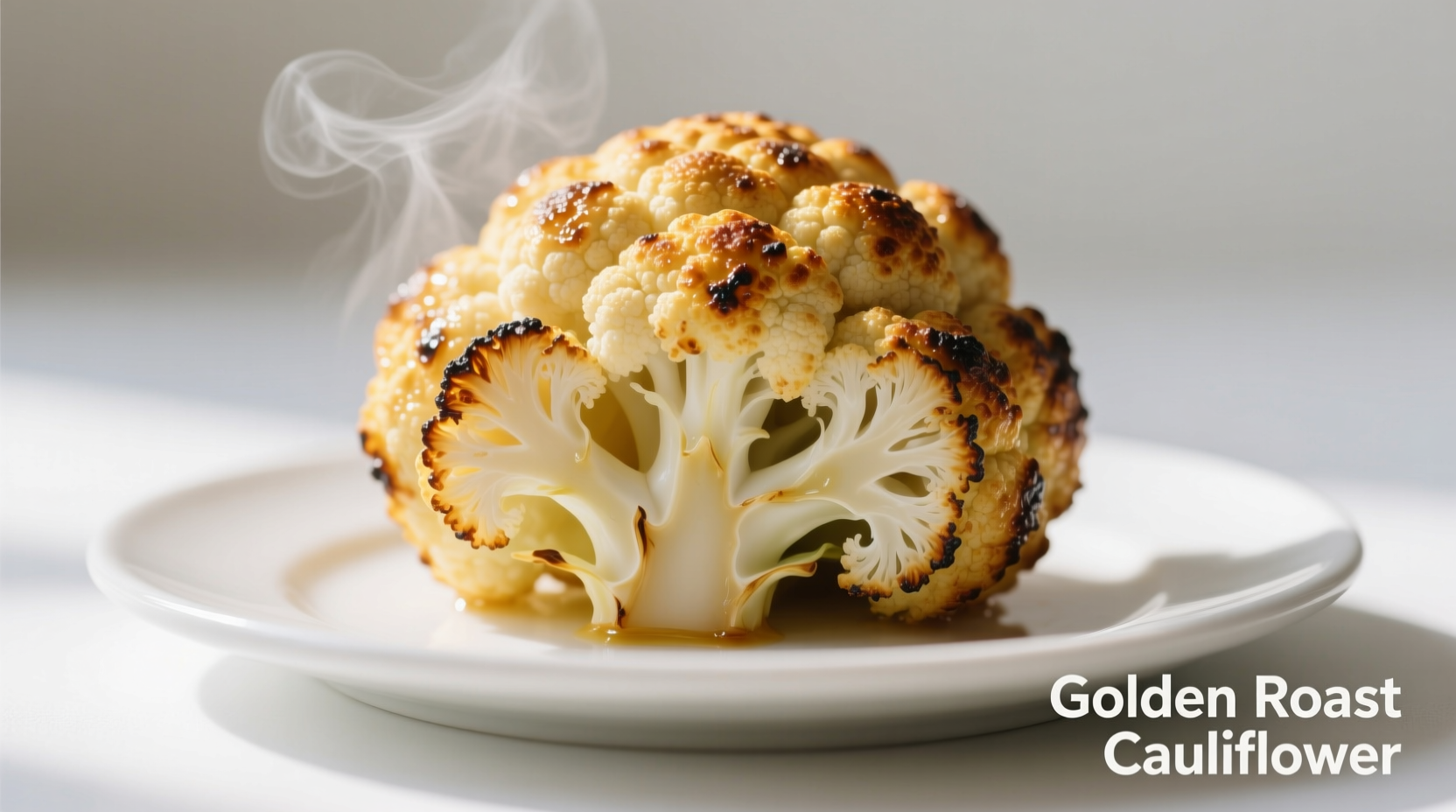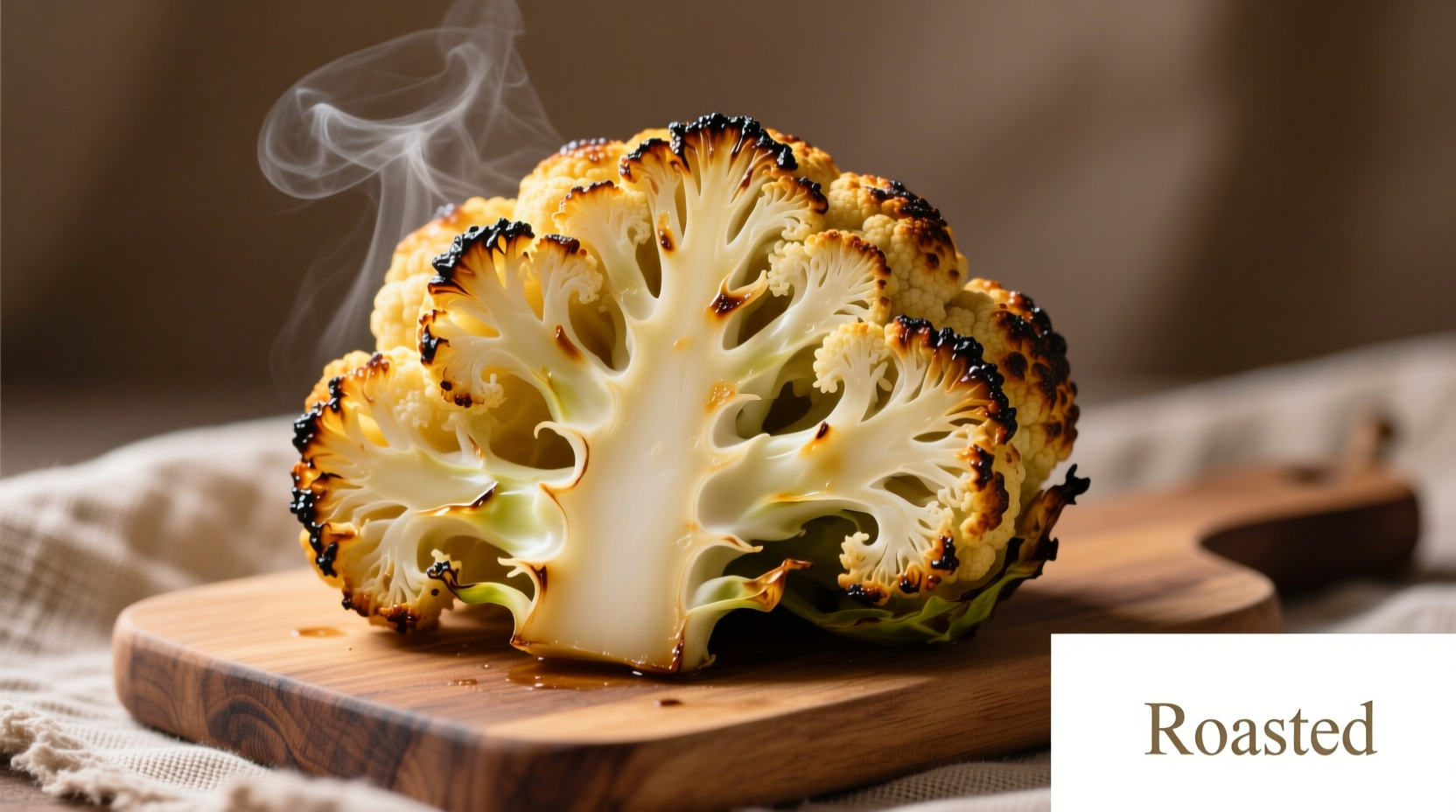Imagine pulling a golden-brown, whole roasted cauliflower head from your oven—its edges beautifully caramelized, the interior tender yet intact, ready to be presented as a stunning centerpiece for your dinner table. This isn't just another side dish; it's a complete culinary experience that requires minimal effort but delivers maximum flavor and visual impact.
Why Roasting a Whole Head Works Better Than Florets
When you roast cauliflower as a whole head rather than separated florets, you preserve its natural structure while creating superior texture contrast. The exterior develops deep caramelization through the Maillard reaction, while the interior steams gently in its own moisture. Food science research shows that roasting whole vegetables preserves more nutrients compared to boiling or steaming, as water-soluble vitamins remain contained within the vegetable's structure.
| Preparation Method | Vitamin C Retention | Texture Outcome | Flavor Development |
|---|---|---|---|
| Whole head roasting | 85-90% | Crispy exterior, tender interior | Complex caramelized notes |
| Boiled florets | 40-50% | Uniformly soft | Muted, one-dimensional |
| Steamed florets | 60-70% | Firm but moist | Mild, clean flavor |
Data source: Journal of Food Science and Technology
Essential Ingredients and Equipment
The beauty of whole roasted cauliflower lies in its simplicity. You need just five basic ingredients:
- 1 large head cauliflower (about 2–2.5 lbs)
- 3 tablespoons extra-virgin olive oil
- 1 teaspoon kosher salt
- 1/2 teaspoon freshly ground black pepper
- Optional: garlic powder, smoked paprika, or cumin for variation
For equipment, a rimmed baking sheet is essential to catch any drips during roasting. Lining it with parchment paper prevents sticking without compromising browning. A sharp knife and kitchen twine help secure loose leaves for even cooking.

Step-by-Step Preparation Process
Follow these professional chef techniques for perfect results every time:
- Prep the cauliflower: Remove outer leaves, trim stem flush with base (don't cut into head), and rinse under cold water. Pat completely dry—moisture is the enemy of proper browning.
- Season strategically: Place cauliflower stem-side down. Drizzle 1 tablespoon oil into the center where the florets meet the core. This allows oil to penetrate inward while coating the exterior with remaining oil.
- Secure for even cooking: Lightly tie outer leaves with kitchen twine to maintain shape during roasting.
- Temperature matters: Preheat oven to 425°F (220°C)—high enough for caramelization but not so high that exterior burns before interior cooks.
Cooking Process and Visual Cues
Roasting time depends on cauliflower size, but follow these visual indicators rather than strict timing:
- 30 minutes: Edges begin to turn golden at the very tips
- 45 minutes: Significant browning develops on exposed surfaces
- 60-75 minutes: Deep golden-brown color throughout, fork-tender at thickest part
The FDA recommends cooking vegetables to an internal temperature of at least 135°F (57°C) for food safety, though cauliflower becomes tender around 180°F (82°C). For best results, insert an instant-read thermometer into the thickest part—it should register 180°F when perfectly cooked.
Serving Suggestions and Flavor Variations
Once roasted, let the cauliflower rest for 10 minutes before serving. This allows internal steam to redistribute, preventing collapse when sliced. Serve whole as a dramatic centerpiece, then slice into wedges tableside.
Professional chefs recommend these flavor pairings that enhance cauliflower's natural nuttiness:
- Mediterranean style: Finish with lemon zest, chopped parsley, and toasted pine nuts
- Spiced variation: Brush with harissa paste during last 15 minutes of roasting
- Creamy contrast: Drizzle with tahini sauce or Greek yogurt mixed with garlic
- Umami boost: Sprinkle with nutritional yeast before serving for cheesy flavor
Storage and Reheating Guidelines
Store leftovers in an airtight container in the refrigerator for up to 4 days. For best texture when reheating:
- Oven method: 375°F (190°C) for 15-20 minutes—preserves crispness
- Air fryer: 350°F (175°C) for 8-10 minutes—best for restoring crisp edges
- Avoid microwave: Creates sogginess by steaming the exterior
Food safety experts at the USDA recommend reheating leftovers to an internal temperature of 165°F (74°C) to ensure food safety.
Why This Technique Transforms Your Cooking
Mastering whole vegetable roasting opens doors to dozens of impressive meatless meals. The technique works equally well with romanesco, small cabbages, or even small heads of broccoli. By understanding the principles of dry-heat cooking and moisture retention, you'll develop intuition for roasting vegetables perfectly without constant monitoring—a fundamental skill that elevates your entire cooking repertoire.











 浙公网安备
33010002000092号
浙公网安备
33010002000092号 浙B2-20120091-4
浙B2-20120091-4